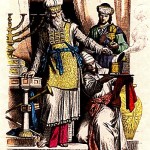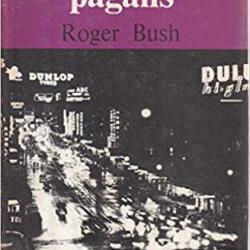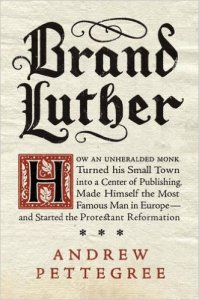
+++
Short answer: “Yes”, but it was also much, much more.

Not too long from now, Reformation Day (All Saint’s Day) will be upon us once again. And next year, of course, will mark the 500th anniversary of Luther nailing the 95 theses to the church door in Wittenberg, and subsequently setting the world on fire – either a good thing (the Holy Spirit!) or a bad thing (Heretic!) depending on your churchly perspective.
A relatively new book brings to mind a very modern question though: to what extent was the Reformation a marketing coup? How in the world did a backwater town become the the printing center and hub of big and important ideas in the 16th century Western world?
Martin Luther famously said that God caused the Reformation of the church. Luther “did nothing”, but while he slept and drank Wittenberg beer with friends, “the Word did it all” in his battle vs. the Roman Catholic papacy.
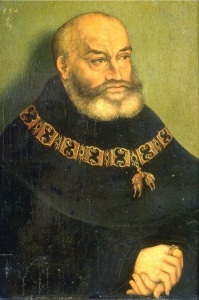
God’s providence may have guided the Reformation, but Brand Luther, by historian and media scholar Andrew Pettegree, argues Martin Luther created a new style – a unique brand that changed history, including ways many have yet to more fully explore.
I heard about the book when the author was interviewed on Albert Mohler’s fine program “Thinking in Public”. Mohler said that he initially had feared that the book, with its title, would be a “reductionistic understanding of Luther,” but that he was pleasantly surprised. “[T]his is the single most interesting book on Luther I believe I have ever read,” he told the author. I’m not done with it yet, but have read enough to know that it would be a good buy.
All in all, Pettegree shows us that there was, “at such a time as [that]”, a “perfect storm” for a reformation. With 20-20 hindsight that is scholarly attuned, he helps us to see that all of the following elements played a part in making the Reformation a reality:
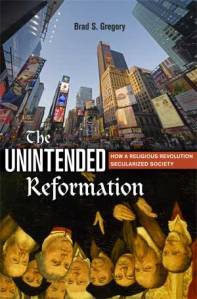
Luther’s fearsome theological conviction
A “good Catholic,” when he nailed (or glued, as Pettegree believes!) his 95 Theses to the door of Wittenberg, Germany, church in 1517, it was “for the purpose of eliciting truth”. In short, from thesis 11 we can see that all saints are saved by grace, through faith, revealed by God’s Word in Christ, “even without letters of pardon” (i.e. “indulgences”)!
The protection of his Prince, Elector Frederick
Frederick was a deeply pious Catholic man who collected the same kinds of relics that Luther attacked. Did he protect Luther, the defamed heretic, in the interest of his own rising political power? After Luther’s life ended, the window of opportunity closed, as “Wittenberg… was reabsorbed back into the Holy Roman Empire.”
Unpopularity of the Roman Church
There was already in Luther’s day a lot of criticism towards the Roman Catholic church, theologically and morally. The great humanist scholar Erasmus had already had a field day attacking Rome. Luther stirred this pot.
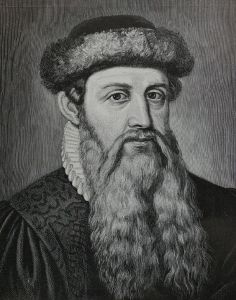
Channeling disruptive technology
The inventor of the printing press, Johannes Gutenberg, had gone bankrupt. Reading the “market” for his “product” and mastering the technology of his day, Luther is the first one who helped make a distribution infrastructure possible. In short, he singlehandedly made printing books a viable activity for printers everywhere.
Brief, popular writing (not in Latin!)
Luther’s writings in the common tongue, “lucid, accessible, and above all, short”, were all that sold consistently, offering immediate financial returns for the printers. With numerous new readers, he outpublished all other authors 10 to 1 and the most successful of his theological opponents 30 to 1.
High standards of professionalism
As one Amazon reviewer of the book put it, “[Luther’s] eye for good printing, artistic wood cuts, and different font types show a creative Luther who tenderly cared for his movement every step of the way.” Pettegree: “how the text would appear would have something to do with how credible it was understood to be”.

Product differentiation
Lucas Cranach, a court painter in Wittenberg “… clothed Luther’s works in a new and distinctive livery, immediately recognizable on a crowded bookstall. The result was the development of a form of book that was itself a powerful representative of the movement – bold, clear, and recogniseably distinct from what has gone before.”
Political, business, and media savviness
Luther understood his personal shortcomings, astutely read the political scene, and “saw the value of friendships where both parties could benefit” (Amazon rewiew). Media? Impeccable timing for publications, and he thought that “[t]he oxygen of publicity was, quite literally, a matter of life and death.” (p. 89)
A Cast of supporting characters
Politicians, artists (Cranach, Dürer), printers (Rhau-Grunenberg), church leaders and other figures throughout Europe joined the movement at no small risk to themselves.
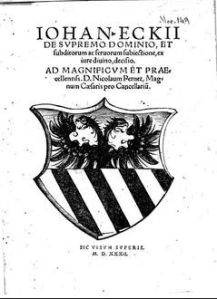
Even though he was also a charismatic personality (“he had a sort of personal magnetism which somehow carried people over their natural borders and boundaries,” Pettegree says), he often talked very convincingly and practically about the importance of being simple and humble in his writings. None of this however precluded having a deep understanding of his times and environment, nor the need to be quite strategic as well: Luther was politically savvy, a master of media manipulation, a creative marketer.
So, going along with that line of thinking, I think the core question for all people in general and Christians in particular is this: was Luther offering a new “product” – or were his efforts in line with that of the catholic church throughout all time, offering a course correction for a train that had gone off the rails? Roland Bainton, in his classic book on Luther, Here I Stand, opted for the latter:
“The center about which all the petals clustered was the affirmation of the forgiveness of sins through the utterly unmerited grace of God made possible by the cross of Christ, which reconciled wrath and mercy, routed the hosts of hell, triumphed over sin and death, and by the resurrection manifested that power which enables man to die to sin and rise to newness of life. This was of course the theology of Paul, heightened, intensified, and clarified. Beyond these cardinal tenets Luther was never to go.” (italics mine)
Semper reformanda!
FIN
P.S. Please consider also looking at the Reformation Day post from the past I am most proud of: The Coming Vindication of Martin Luther.
Select images: Portrait of George, Duke of Saxony (1471-1539),by Lucas Cranach the Elder, from Wikipedia ; Portraits of Hans and Margarethe Luther, Martin’s parents, by Lucas Cranach the Elder, 1527,, from http://www.uncommon-travel-germany.com/martin-luther-biography.html ; Johannes Gutenberg from Wikipedia

